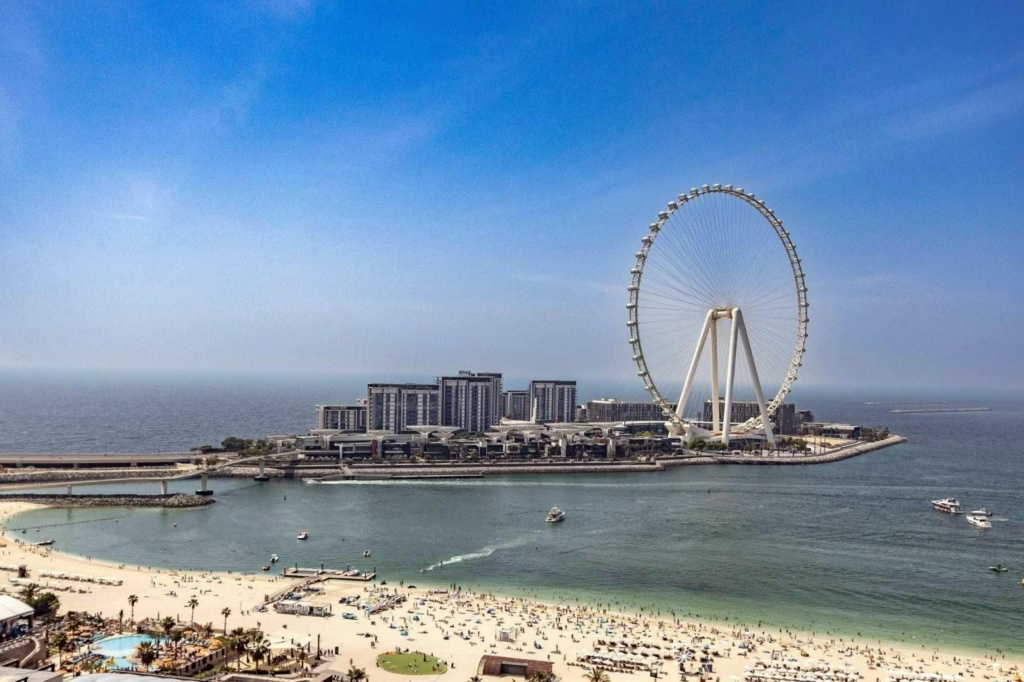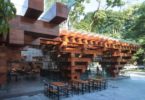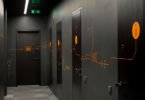Bluewaters Island is often photographed for its skyline views and waterfront cafés, yet the real story sits beneath the surface: a carefully wired district where transport, utilities, and public spaces talk to each other. This isn’t tech for show; it’s engineering designed to make daily life smoother, safer, and more sustainable.

Intelligent Transit And Connectivity
Mobility is the island’s signature. A driverless Group Rapid Transit (GRT) system links Bluewaters to the mainland, running between the island and Nakheel Harbour and Tower Metro Station. Twenty-five unmanned vehicles circulate on a dedicated route, moving thousands of passengers per hour with quick headways and zero tailpipe emissions. Think of it as a nimble bridge between metro and waterfront, trimming the last-mile gap that slows most city trips.
The network is multi-modal by design. A pedestrian bridge ties the promenades to Jumeirah Beach Residence (JBR), so people can stroll to and from the shoreline without waiting for a vehicle. Wayfinding is simple: you follow ramps and shaded paths rather than searching for crossings. For residents comparing schools, cafés, and commute options near apartments in Bluewaters Island, this connectivity means predictable travel times and fewer car-dependent errands.
Under the hood, a dedicated fibre optic backbone stitches everything together. That fast, reliable link feeds the island’s central control for lighting, media, and operations. It’s the reason live updates, synchronised light shows, and real-time maintenance alerts can happen without lag.
Smart Infrastructure And Facility Management
Lighting is a major character here. Retail façades, walkways, and canopy lines use linear LED systems that can be mapped like pixels. A central video control platform conducts the show, while an astronomical clock schedules scenes to sunrise and sunset without manual tweaking. The result: a lively nighttime atmosphere that stays energy-aware.
Operations lean on connected systems. From the main control room, teams supervise fixtures, scenes, and safety cues through PC-based software. Because devices are addressable, one flicker doesn’t require shutting down a whole strip; engineers target the exact node.
Hygiene and efficiency show up in the small places. Retail washrooms use touchless, water-saving taps and efficient hand dryers. That reduces water draw during peak hours and keeps surfaces cleaner by minimising touch points.
Advanced Construction And Engineering
Bluewaters is a man-made island built from marine sand and rock placed with precision. Specialised dredgers used techniques like “rainbowing” to project sand where it was needed, then crews shaped it to grade.
Building on sand demands stability. Engineers applied vibro-compaction – lowering vibrating probes and injecting water to rearrange loose grains into a denser matrix. The payoff is a higher load-bearing capacity and less settlement risk for heavy structures.
Accuracy mattered at every stage. Differential GPS (DGPS) guided placement to within inches, ensuring embankments, quay lines, and utilities landed exactly where the models required. During construction, temporary geosynthetic barriers protected fresh edges from erosion until permanent armouring could take over.
Sustainability Initiatives
Smart shouldn’t mean resource-hungry. Across Dubai, and on Bluewaters, the push is toward greener practice: recycled water where appropriate, high-performance envelopes, and systems that can be monitored as a whole rather than as isolated assets. When energy, water, and waste share data, operators can catch leaks early, smooth power peaks, and optimise collection routes.
In simple terms, integration equals resilience. If occupancy rises for a weekend event, the platform can dim non-essential lights, increase public-area cleaning cycles, and coordinate GRT frequency, all based on the same live picture.
What It Means For People
All this technology fades into the background when it works well. Visitors notice short waits, clear directions, and comfortable walks. Store managers see steadier footfall and fewer equipment surprises. Residents benefit from infrastructure that anticipates rather than reacts: lit paths when dusk falls, reliable connections to the metro, and facilities that feel well-kept.
The Bottom Line
Bluewaters Island shows how a waterfront can be both playful and precise. By pairing advanced engineering with responsive operations, it turns complexity into calm – exactly what you want when city life meets the sea. As Dubai keeps refining its smart city playbook, Bluewaters offers a clear lesson: integrate early, measure constantly, and design for comfort.







Leave a Comment
You must be logged in to post a comment.